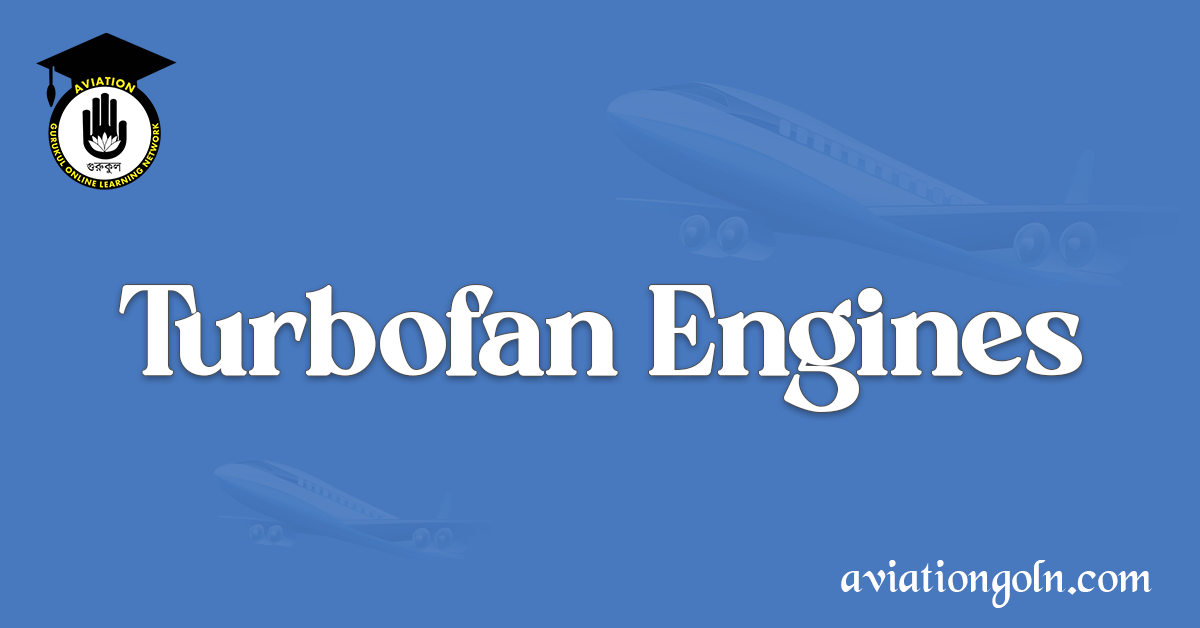Turbofan Engines: In the grand theater of aviation, the constant pursuit of efficiency, power, and noise reduction has resulted in the emergence of several engine types. Among them, the turbofan engine stands out as a predominant force in modern commercial aviation.
Characterized by its large fan at the front and the ability to generate thrust from both the core engine and bypassed air, the turbofan engine offers an intricate blend of performance and efficiency. Let’s delve into the world of turbofan engines, exploring their design, types, advantages, challenges, and their undeniable impact on contemporary flight.
Turbofan Engines: Types of Aircraft Engines

Historical Evolution
The turbofan engine’s journey began in the late 1930s and 1940s, paralleling the development of the turbojet. Recognizing the efficiency limitations of pure turbojets, especially at subsonic speeds, engineers envisioned an engine that could capitalize on both jet propulsion and the thrust from a large fan. By the 1960s, the first high-bypass turbofan engines began entering commercial service, revolutionizing the industry with their unmatched efficiency and performance.

Working Principle
The turbofan engine is essentially a turbojet to which a fan has been added. While a portion of the ingested air enters the engine core, a significant amount bypasses the core and is expelled directly out the back, contributing to the engine’s thrust.
Core Components and Mechanisms
- Fan: This is the large, visible part at the front. As the fan blades rotate, they pull in and accelerate large volumes of air.
- Compressor: Like the turbojet, the air destined for the core enters the compressor, where it is pressurized.
- Combustion Chamber: High-pressure air mixes with fuel and ignites, producing a high-energy stream of exhaust gases.
- Turbines: These hot gases pass through turbines, extracting energy to drive both the compressor and the fan.
- Exhaust Nozzle: The remaining exhaust gases are expelled out the back, providing additional thrust.

Bypass Ratio and Engine Types
The ratio of air bypassing the core to the air passing through the core is termed the bypass ratio. Based on this, turbofan engines are categorized as:
- Low-Bypass Turbofans: Often seen in military jets, they have a bypass ratio of less than 2:1. They are compact and capable of supersonic speeds but are less fuel-efficient compared to their high-bypass counterparts.
- High-Bypass Turbofans: Predominantly used in commercial airliners, these have bypass ratios ranging from 5:1 to 10:1 or even higher. They are characterized by their large diameter fans and offer excellent fuel efficiency.
- Ultra-High Bypass Turbofans: An emerging category aiming for even greater efficiency, targeting bypass ratios of 15:1 or more.
Advantages of Turbofan Engines
- Fuel Efficiency: Particularly in high-bypass variants, the efficiency is considerably better than pure turbojets.
- Noise Reduction: The bypassed air acts as a sort of “buffer,” reducing the noise generated by the core engine.
- Versatility: Suitable for a wide range of speeds and altitudes.
- Thrust Range: Modern turbofans can produce a wide range of thrust levels, accommodating both small regional jets and large long-haul airliners.

Challenges and Limitations
- Size and Weight: High-bypass engines, due to their large fans, can be bulky, affecting aircraft design considerations.
- Complexity: The addition of a fan and related systems increases the complexity of the engine.
- Cost: Advanced materials and intricate designs can elevate the costs associated with manufacturing and maintenance.

Innovations and Future Trends
Turbofan technology is not static. Engineers constantly push boundaries to achieve better efficiency, lower emissions, and reduced noise footprints. Some notable advancements include:
- Geared Turbofan (GTF): Incorporates a gearbox between the fan and the low-pressure turbine, allowing them to operate at their respective optimal speeds. This results in better fuel efficiency and noise reduction.
- Blade Materials: The use of composite materials and even ceramic matrix composites (CMCs) to reduce weight and enhance durability.
- Variable Cycle Engines: Engines that can adapt their operation to different flight conditions, switching between turbofan and turbojet modes.
The ongoing pursuit of sustainable aviation also suggests the integration of hybrid-electric systems with turbofan technology, aiming for reduced carbon footprints and enhanced efficiency.

Turbofan engines, with their signature roar and impressive design, have become synonymous with modern air travel. They epitomize the advances made in aeronautical engineering over the past few decades. As air travel continues to grow and the demands on efficiency and sustainability become even more pressing, the turbofan engine will undoubtedly continue its evolution. It stands as a beacon of human ingenuity and the spirit of perpetual innovation, reminding us of the limitless horizons that await in the realm of flight.
